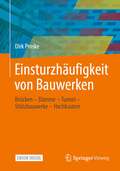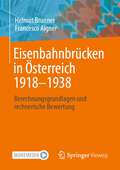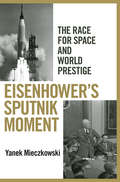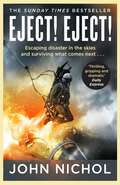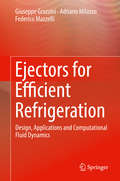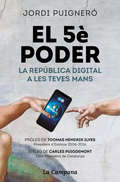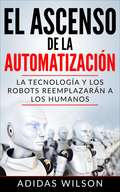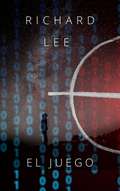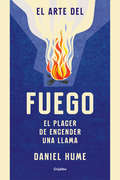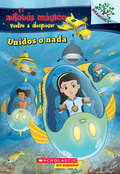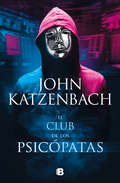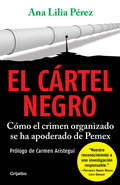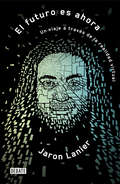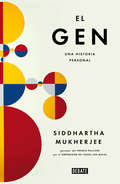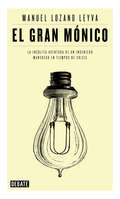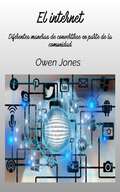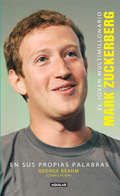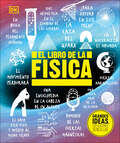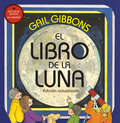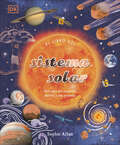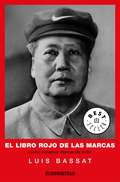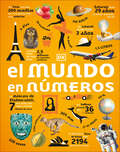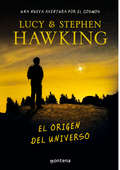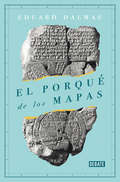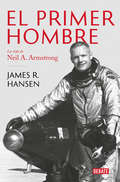- Table View
- List View
Einsturzhäufigkeit von Bauwerken: Brücken – Dämme – Tunnel – Stützbauwerke – Hochbauten
by Dirk ProskeDer rechnerische Nachweis der Sicherheit von Bauwerken kann über die Bestimmung der Versagenswahrscheinlichkeit oder unter Verwendung von Sicherheitselementen erfolgen. Beobachtete Schäden und Einstürze werden meistens im Rahmen von Gutachten bewertet, was auf Grund der großen Anzahl Unikate im Bauwesen sinnvoll erscheint. Allerding sollte es auch eine Prüfung der beobachteten Sicherheit über alle Bauwerke geben. Deshalb werden in diesem Buch die Einsturzhäufigkeiten für verschiedene Bauwerkstypen, wie Brücken, Dämme, Tunnel, Stützbauwerke und Hochbauten, ermittelt. Die Einsturzhäufigkeit gehört wie die Versagenswahrscheinlichkeit zur Stochastik. Daher werden die beobachteten mittleren Einsturzhäufigkeiten und die berechneten mittleren Versagenswahrscheinlichkeiten verglichen. Bei diesem Vergleich zeigt sich, dass die Einsturzhäufigkeiten in der Regel niedriger sind als die berechneten Versagenswahrscheinlichkeiten. Zusätzlich werden Kernschadenshäufigkeiten und -wahrscheinlichkeiten angegeben, um den Vergleich auf ein anderes technisches Erzeugnis auszuweiten.
Eisenbahnbrücken in Österreich 1918-1938: Berechnungsgrundlagen und rechnerische Bewertung
by Helmut Brunner Francesco AignerFür die in der Zwischenkriegszeit in Österreich errichteten Eisenbahnbrücken werden die Grundlagen für eine rechnerische Bewertung gegeben. Es werden die maßgebenden Vorschriften, Verordnungen, Normen und dazugehörige Fachmeinungen aus der Entstehungszeit vorgestellt, die Sicherheitsphilosophie erläutert und der nach 1945 im deterministischen System üblichen gegenübergestellt. Ein weiterer Punkt sind die Regelplanungen der damaligen Zeit. Da bei Brücken aus dieser Zeit die Frage nach der Restlebensdauer eine entscheidende ist, wird diesem Fragenkomplex breiter Raum gegeben einschließlich Hinweisen zur Ermittlung der zur damaligen Zeit verkehrenden Fahrbetriebsmittel. Ein Kapitel über die für die Bewertung von Straßenbrücken notwendigen Vorschriften und Normen ergänzt das Buch.
Eisenhower's Sputnik Moment: The Race for Space and World Prestige
by Yanek MieczkowskiIn a critical Cold War moment, Dwight D. Eisenhower's presidency suddenly changed when the Soviet Union launched Sputnik, the world's first satellite. What Ike called "a small ball" became a source of Russian pride and propaganda, and it wounded him politically, as critics charged that he responded sluggishly to the challenge of space exploration. Yet Eisenhower refused to panic after Sputnik-and he did more than just stay calm. He helped to guide the United States into the Space Age, even though Americans have given greater credit to John F. Kennedy for that achievement.In Eisenhower's Sputnik Moment, Yanek Mieczkowski examines the early history of America's space program, reassessing Eisenhower's leadership. He details how Eisenhower approved breakthrough satellites, supported a new civilian space agency, signed a landmark science education law, and fostered improved relations with scientists. These feats made Eisenhower's post-Sputnik years not the flop that critics alleged but a time of remarkable progress, even as he endured the setbacks of recession, medical illness, and a humiliating first U.S. attempt to launch a satellite. Eisenhower's principled stands enabled him to resist intense pressure to boost federal spending, and he instead pursued his priorities-a balanced budget, prosperous economy, and sturdy national defense. Yet Sputnik also altered the world's power dynamics, sweeping Eisenhower in directions that were new, even alien, to him, and he misjudged the importance of space in the Cold War's "prestige race." By contrast, Kennedy capitalized on the issue in the 1960 election, and after taking office he urged a manned mission to the moon, leaving Eisenhower to grumble over the young president's aggressive approach.Offering a fast-paced account of this Cold War episode, Mieczkowski demonstrates that Eisenhower built an impressive record in space and on earth, all the while offering warnings about America's stature and strengths that still hold true today.
Eject! Eject!
by John Nichol'Eject! Eject!' When the call is made to abandon an aircraft, it's only the beginning of the story... From the Sunday Times bestselling writer John Nichol, author of Spitfire, Lancaster and Tornado, comes a brilliant new book that reveals the astonishing story of an invention that has saved many thousands of lives around the world, including his own: the ejection seat. Nichol tells the remarkable tale of how the ejection seat was first conceived during the Second World War as countless lives were lost in accidents and in battle. In the wake of the war, that technological race to save aircrew lives using explosive seats continued at an incredible pace. Nichol tells the story of the brave men who risked their lives testing those early devices, and interviewed the first British pilot to eject back in 1949, when ejection, from pulling the handle to being under the parachute, took thirty seconds. Today, that figure is down to around one second. Packed with interviews with aircrew who know exactly how it feels to &‘Bang Out&’ from an aircraft at high speed, both in peace and in war, the book gives the reader a vivid sense of what that life-saving experience feels like, but also features the moving accounts of what happens next, from the viewpoint of both the crews and their families, who often have little or no information about whether or not their loved ones have survived. Because ejecting is just the start of a journey….. Packed with dramatic action, incredible science and moving recollections, Eject! Eject! is an essential read.
Ejectors for Efficient Refrigeration: Design, Applications And Computational Fluid Dynamics
by Giuseppe Grazzini Adriano Milazzo Federico MazzelliEncompassing both practical applications and recent research developments, this book takes the reader from fundamental physics, through cutting-edge new designs of ejectors for refrigeration. The authors’ unique vision marries successful design, system optimization, and operation experience with insights on the application of cutting-edge Computational Fluid Dynamics (CFD) models. This robust treatment leads the way forward in developing improved ejector technologies. The book covers ejectors used for heat powered refrigeration and for expansion work recovery in compression refrigerators, with special emphasis on two-phase flows of “natural” fluids within the ejector, i.e. steam and carbon dioxide. It features worked examples, detailed research results, and analysis tools.
El 5è poder: La República Digital a les teves mans
by Jordi PuigneróEl 5è poder. La República Digital a les teves mans és una història real i molt personal, de projecte i de futur. Però, sobretot, és un cant a l'optimisme: tal com diu l'autor, una oportunitat única d'imaginar i construir la Catalunya que serà digital i en forma de república, o no serà. El 5è poder. La República Digital a les teves mans podria ser el guió d'un nou capítol de Black Mirror o d'una nova entrega de Matrix, però és la foto més actualitzada de la teva vida. O de la meva. Avui les guerres es lliuren a internet, l'allotjador turístic més gran del món no té ni un hotel, i la nació més poblada del món és una xarxa social. Ens relacionem, ens informem i gestionem tota la vida amb el mòbil: salut, parelles, educació, transport, bancs, compres, menjar, oci... sense adonar-nos-en, la nostra vida real ha passat a ser la digital, i la física, una simple necessitat fisiològica. Enmig d'aquest tsunami tecnològic,quin rol juga Catalunya? I més important, quin rol vol jugar-hi? En una revolució on ser petit és un avantatge i la matèria primera és el talent, ha arribat la nostra oportunitat. Catalunya ha estat la fàbrica d'Espanya, però ara ha d'esdevenir un dels hubs digitals d'Europa. Però Jordi Puigneró no ens parla només de canvis geopolítics, econòmics, en les relacions humanes... sinó també de canvis profunds a la societat: com acompanyar els nostres fills en aquest oceà tecnològic? Com evitar que una revolució de llibertat esdevingui una tirania sense precedents? Com ciberprotegir-nos dels enemics llunyans i dels propers? Com aprofitar aquesta oportunitat per construir una veritable democràcia ciutadana?
El Ascenso de la Automatización: La Tecnología y los Robots Reemplazarán a los humanos
by Jorge Ledezma Millán Adidas WilsonEl Ascenso de la Automatización: La Tecnología y los Robots Reemplazarán a los humanos. Por Adidas Wilson Probablemente usted tiene alguna idea acerca de la manera negativa en que los robots afectarán a los trabajadores. Personajes clave del mundo de la tecnología como Bill Gates y Elon Musk han propuesto sus soluciones; ingreso universal básico o impuesto a los robots. Pero en medio de las advertencias serias y las utopías extremas de ciencia-ficción, el sufrimiento humano que seguirá a la futura pérdida de empleos parece pasar desapercibido. Dentro de 15 años a partir de ahora, la economía de los Estados Unidos perderá el 38% de sus empleos debido a la automatización. Este porcentaje es alarmante, aun así, mucha gente sostiene que la automatización no debería retrasarse. Sin embargo, ¿qué pasaría si el progreso se desacelera un poco? ¿tan solo lo suficiente para ajustarse a la ralentización de las tendencias en moda y alimentos, quizá? Por lo menos, debería reconsiderarse la propiedad de los camiones autónomos. La robotización no sería tan mala si los conductores de camiones fuesen los propietarios de los camiones automáticos en vez de que todos estos sean propiedad de una corporación. Mientras tanto, la robotización es una amenaza real e implica un peligro para la crucial infraestructura humana.
El Juego
by Richard LeeDurante el Big Bang, un virus que estaba dormido despierta y se vuelve 'consciente'. Vaga sola al principio hasta que se topa con humanos que al principio le agradaban. Pero la nueva raza de humanos es más inteligente y más pequeña con mitos y sueños y odio. Reaccionando a sus miedos, La Vagante es encerrada en una cueva mientras la era de hielo se acercaba. Los desprecia. Ella hace un pacto con su dios para vengarse, pero en su lugar la mata. Sin un cuerpo ella solo puede existir entre mundos, hasta que conoce a Phillip McKenzie, un programador de juegos. Ella se enamoró completamente de él. Su único contacto al principio es a través de sueños y cuando él despierta no recuerda nada acerca de ella pero si recuerda las matemáticas que ella le enseña y lo aplica en sus juegos. Años después, en el lanzamiento de su último y mas esperado juego... La Vagante regresa. El juego que él había creado se había convertido en su dominio y ella quiere salir. Quiere caminar en la Tierra de nuevo. Sin embargo, hay un par de problemas, Phillip no la ayudará y ella está totalmente enamorada del tipo. Pero la familia de él, esa es otra historia, no son nada para ella. Y ese es su as bajo la manga. Lisa extraña a su padre. Su madre es una drogadicta en recuperación, y su hermano menor Timmy es lo mejor de este mundo. Le llegó un paquete y un inesperado correo electrónico de su padre invitándola a jugar. Ella es menor de edad pero su copia puede superar ese pequeño problema. El ex-traficante/amante/proxeneta de su madre llega durante la cena y esta vez quiere mas que a su madre, la quiere a ella también. Para escapar de sus vagantes ojos y sus avances, Lisa lleva a Timmy a su habitación le deja jugar su juego favorito. Cuando enciende el monitor, el código de la máquina fluye de la computadora, cubriendo cada centímetro del cuerpo de Timmy y lo metió al mundo del juego. Para recuperarlo, para salvar la
El arte del fuego: El placer de encender una llama
by Daniel HumeDaniel Hume nos lleva a través de este libro de aventuras y curiosidades por un viaje en las zonas más salvajes de nuestro planeta con un objetivo: prender la primera chispa de una hoguera a través de técnicas ancestrales. Es el fascinante arte del fuego. Un increíble viaje al origen del fuego, el elemento que nos ha convertido en quienes somos. Desde el inicio de los tiempos, en cada rincón del planeta, los humanos se han apiñado alrededor del fuego. Ha sido fuente de inspiración para miles de historias contadas a su alrededor, y conecta la esencia de nuestro ser con la naturaleza. La capacidad de prender una hoguera es una de las habilidades más importantes que cualquier aventurero puede poseer. Y muy poco se ha escrito sobre ello, hasta ahora. Acompañado de fotografías e ilustraciones, Daniel Hume nos invita a una trepidante aventura por las culturas del mundo para aprender deprimera mano las técnicas, mitos y curiosidades en torno al fascinante arte del fuego. Daniel Hume ha visitado los rincones más recónditos del mundo y ha aprendido decenas de técnicas ancestrales para prender fuego de la nada. Desde la primera chispa hasta la última llama, conoceremos cómo las culturas más escondidas en selvas y lugares remotos de alrededor del globo prenden fuego, ese valiosísimo agente que da calor, luz y energía.
El autobús mágico vuelve a despegar: Explora bancos de peces (El autobús mágico vuelve a despegar)
by Judy KatschkeThe Magic School Bus is back and in the Branches line!Seatbelts, everyone! The Magic School Bus is back and ready to ride again. A book in Spanish!Professor Frizzle's kid sister Fiona might be the new teacher at Walkerville Elementary, but she's got the same old motto: take chances, make mistakes, and get messy! When the class decides to go to Hawaii for their latest fieldtrip, they think they're in for rest, relaxation, and riding the waves. But when Wanda tries to save an endangered fish from a giant shark, its Wanda that needs saving. Luckily her own class learns something from a totally different type of school--fish!¡Abrochense los cinturones de seguridad! El autobus magico esta de regreso y listo para volver a despegar. ¡Un libro en espanol!La nueva maestra de la Escuela de Walkerville, no tiene miedo de arriesgarse, cometer errores y embarrarse. Cuando la clase decide ir a Hawai, los chicos piensan que les espera el descanso y surfear, pero no es asi. ¡Viviran una aventura submarina!
El club de los psicópatas
by John KatzenbachJohn Katzenbach, maestro del suspense psicológico y autor superventas de El psicoanalista y Jaque al psicoanalista, nos mantiene en vilo con esta nueva novela sobre el enfrentamiento mortal entre un grupo de psicópatas y dos adolescentes. Alpha, Bravo, Charlie, Delta y Easy se hacen llamar los Muchachos de Jack, en honor a Jack el destripador. Entre ellos no se conocen más que por una plataforma en la Deep Web donde comparten su verdadera pasión: llegar a ser artistas del asesinato. Cuando Connor y Nikki violan la intimidad de su chat, la furia de estos psicópatas se desencadena y no se detendrá ante nada. Con una inteligencia feroz planean como venganza la muerte de los dos adolescentes junto con sus familias. Sin embargo, Connor y Niki no son como el resto de las víctimas de estos asesinos en serie. La pesadilla comienza y solo hay dos opciones: dejarse cazar o sobrevivir.
El cártel negro: Cómo el crimen organizado se ha apoderado de Pemex
by Ana Lilia PérezEsta valiosa investigación ha sido el punto de partida para la estrategia del gobierno de López Obrador contra el huachicoleo. "El cártel negro es el trabajo más amplio, mejor documentado y más descarnado acerca de la grave incursión de la delincuencia organizada en Pemex. Ana Lilia Pérez, una periodista fuerte, incisiva y acuciosa, presenta en este libro la que probablemente sea su más acabada y potente investigación periodística." Carmen Aristegui Durante los gobiernos de Vicente Fox Quesada y Felipe Calderón Hinojosa, se desarrolla el "cártel negro", un conglomerado de funcionarios, trabajadores, empresarios, contratistas, inspectores, contralores, agentes aduanales, dirigentes y miembros del sindicato petrolero, políticos, ordeñadores, tapineros, huachicoleros, extorsionadores, defraudadores, contrabandistas y lavadores de dinero que, alineados con los traficantes de droga, se consolidan como una organización empresarial paralela a Pemex, al grado de competirle en el mercado nacional e internacional de los combustibles. En estas páginas se documentan escrupulosamente las acciones del crimen organizado en la industria petrolera de México: la creación de compañías fachada, los contratos simulados, la ordeña de pozos y ductos, así como el saqueo en las áreas con mayor blindaje. Es un trabajo periodístico decisivo que se ha construido a partir de informes confidenciales, bitácoras del área de seguridad de Pemex, auditorías de la Secretaría de la Función Pública, testimonios de testigos protegidos y, sobre todo, de expedientes reservados en términos de seguridad nacional que la autora logró desclasificar tras una larga batalla. Así se devela cómo la empresa petrolera quedó de rodillas ante la mafia. El cártel negro es una ventana al fangoso inframundo en el que se convirtió a Pemex, producto de muchos años de saqueo, corrupción e impunidad.
El futuro es ahora: Un viaje a través de la realidad virtual
by Jaron LanierEl padre de la realidad virtual nos explica sus infinitas posibilidades a través de su experiencia con la tecnología. A través del fascinante recorrido de una vida dedicada a la tecnología, Jaron Lanier expone la capacidad de la realidad virtual para iluminar y amplificar la comprensión que tenemos de nuestra especie y ofrece a los lectores una nueva perspectiva sobre cómo el cerebro y el cuerpo humano se conectan al mundo. Al entender la realidad virtual como una aventura tanto científica como cultural, Lanier demuestra el componente humanístico que esta aporta a la tecnología. Si bien sus libros anteriores ofrecían una visión más crítica de las redes sociales y de otras manifestaciones de la tecnología, en El futuro es ahora el autor argumenta que la realidad virtual puede hacer que nuestra vida sea más rica y más completa. Una obra que no solo nos muestra qué significa ser humano en esta era de posibilidades tecnológicas sin precedentes, sino que también une la dimensión tecnológica con nuestra experiencia corporal. Reseñas:«Una historia maravillosa, profundamente humana y sumamente personal.»Dave Eggers «Es el padre de la realidad virtual y un genio de la tecnología punta.»Sunday Times «Una mente tan ilimitada como internet.»Evening Standard «Íntimo e idiosincrásico [...] peculiar y fascinante [...] La vívida imaginación de Lanier se convierte en un personaje más. Su visión es humanista e insiste en que el objetivo más importante del desarrollo de la realidad virtual debe ser la conexión humana.»The New York Times Book Review «Una lectura esencial, no solo para los conocedores de la realidad virtual, sino para cualquiera interesado en comprender cómo la sociedad ha llegado a convertirse en lo que es hoy en día y en qué podría convertirse en un futuro no tan lejano.»The Economist «Brillante e inspirador.»Publishers Weekly
El gen: Una historia personal
by Siddhartha MukherjeeMagnífico, necesario y absorbente, Siddhartha Mukherjee, ganador del Premio Pulitzer por El emperador de todos los males, ha escrito una extraordinaria «biografía» del gen y una respuesta a una de las cuestiones más relevantes del futuro: ¿Qué significa ser humano cuando se es capaz de manipular la información genética? La historia de cómo hemos descifrado el código fuente que nos hace humanos abarca todo el planeta y varios siglos -y probablemente defina el futuro que nos espera. Entrelazando ciencia, historia y vivencias personales, Mukherjee hace un recorrido por el nacimiento, el crecimiento, la influencia y el futuro de una de las ideas más poderosas y peligrosas de la historia de la ciencia: el gen, la unidad fundamental de la herencia, y la unidad básica de toda la información biológica. Desde Aristóteles y Pitágoras, pasando por los descubrimientos relegados de Mendel, la revolución de Darwin, Watson y Franklin, hasta los avances más innovadores llevados a cabo en nuestro siglo, este libro nos recuerda cómo la genética nos afecta a todos cada día. Reseñas:«Esta quizá sea la mejor historia de suspense jamás contada, una búsqueda de milenios dirigida por mil exploradores, de Aristóteles a Mendel a Francis Collins, tras el enigma en el centro de cada célula. Como El emperador de todos los males, El gen es prodigiosa, torrencial y finalmente transcendente. Si te interesa en qué consiste ser humano hoy y en todos los mañanas que vengan, tienes que leer este libro.»Anthony Doerr, autor de La luz que no puedes ver «El gen es una magnífica síntesis de la ciencia de la vida, y nos obliga a enfrentarnos con el núcleo de esa ciencia, así como con los retos éticos y filosóficos a nuestra idea de en qué consiste ser humano.»Paul Berg, Premio Nobel de Química «Magnífico... La historia del gen se ha contado por trozos de distintas maneras, pero nunca con la perspectiva y la grandeza que Mukherjee aporta a su historia.»James Gleick, New York Times Book Review
El gran Mónico: La insólita aventura de un ingeniero manchego en tiempos de crisis
by Manuel Lozano LeyvaLa fabulosa e instructiva historia del ingeniero e inventor Mónico Sánchez, que saliendo de la miseria terminó conquistando Nueva York. «En resumen, lo que pretendo con este relato no es acercarme al alma de Mónico Sánchez Moreno ni al detalle academicista de su historia, sino algo mucho más sencillo a la vez que ambicioso: animar a nuestros jóvenes desesperanzados en esta época de crisis del sur de Europa, en particular, por razones obvias, a los españoles. A ellos va dirigido este librito, para que vean que en condiciones enormemente más adversas que las actuales, es posible no sólo salir adelante, sino llevar a cabo proezas admirables y a priori imposibles para el bienestar propio y del país. O sea, que el (supuesto) destino es siempre evitable.» Manuel Lozano Leyva
El internet: Diferentes maneras de convertirse en parte de la comunidad (¿Cómo...? #79)
by Owen JonesEspero encuentre información rentable, de utilidad y de ayuda. Las ideas de este libro electrónico sobre diversos aspectos de Internet, incluido su uso en beneficio propio, están organizadas en 17 capítulos de entre 500 y 600 palabras cada uno. Espero que sea de interés para quienes esperan ganar dinero en línea y para quienes desean atraer más tráfico a un negocio fuera de la red mediante el empleo de los recursos a menudo “gratuitos” que ofrece Internet. También será útil para los blogueros que solo quieren hacer amigos al rededor del mundo y chatear con ellos. Afortunadamente, muchos aspectos de Internet siguen siendo gratuitos, especialmente si no se deja manipular por los autoproclamados gurús de Internet, que están esperando para abalanzarse sobre los novatos desprevenidos. Como beneficio adicional, yo mismo le autorizo para usar el contenido en su propio sitio web o en sus propios blogs y boletines, aunque es mejor si primero los vuelve a escribir con sus propias palabras.
El joven multimillonario Mark Zuckerberg en sus propias palabras: Mark Zuckerberg In His Own Words (In Their Own Words Ser.)
by George BeahmEl primer y único libro que detalla los pensamientos visionarios y las opiniones del fundador de Facebook de manera contundente. Un panorama claro y directo para entender a Zuckerberg y la compañía que fundó; sus puntos de vista, estrategias de negocio y las lecciones aprendidas con el tiempo. Mark Zuckerberg se ha convertido rápidamente en un prominente personaje, con la misma velocidad que la compañía que fundó en su dormitorio de Harvard, en 2004. El deseo de la gente por saber qué pasa dentro de Facebook y con su fundador, parece insaciable. La personalidad y el estilo empresarial de Zuckerberg despiertan una gran curiosidad; retratos ficticios de Hollywood y rumores de Wall Street han armado el rompecabezas de este joven emprendedor, innovador y visionario. Dada la capitalización actual de Facebook en el mercado y la cantidad de usuarios a nivel mundial claramente hay mucho más de Zuckerberg que cualquier retrato simplificado puede transmitir. El chico multimillonario: Mark Zuckerberg en sus propias palabras es el acercamiento más íntimo y con mayor autoridad del hombre detrás de Facebook y la generación entera que le dio tanto éxito; el aparente heredero tecnológico de Steve Jobs y Bill Gates habla de la tecnología, la innovación, la privacidad, los hackers, Facebook, Harvard, los gemelos Winklevoss y su ex socio Eduardo Saverin. Como el pionero emprendedor que es, Zuckerberg ha probado ser un estratega calculador y sin escrúpulos, comprometido de manera absoluta con su visión. Facebook existe actualmente como una herramienta social para mantener una comunicación viva y de primer nivel, y un modelo de negocios del siglo XXI que lleva a las compañías de tecnología de la siguiente generación hacia un clima económico motivado por la inevitabilidad de un mercado global saturado de tecnología social. El potencial de Facebook es desconocido, pero la clave de su éxito depende de las ideas y la visión de "Zuck".
El libro de la física (DK Big Ideas)
by DKGrandes ideas, explicaciones sencillasCon una prosa sencilla, El libro de la física presenta explicaciones claras y concisas que desbrozan la jerga especializada, diagramas que plasman complejas teorías, citas memorables e ingeniosas ilustraciones que juegan con nuestros conocimientos de la física.¿Cómo generan electricidad los imanes? ¿Qué es la antimateria? ¿Es posible viajar en el tiempo? A partir de estas y otras muchas preguntas, los físicos han ampliado las fronteras del conocimiento humano y nos han ayudado a comprender las leyes físicas que rigen nuestro mundo y el universo.Tanto el estudiante deseoso de aprender como el simple lector curioso acerca del funcionamiento del mundo encontrarán en este libro muchas ideas estimulantes.
El libro de la luna
by Gail GibbonsThis up-to-date, clear, and interesting introduction to our magnificent moon from award-winning author Gail Gibbons is now available in Spanish!Shining light on all kinds of fascinating facts about our moon, this newly translated Spanish edition of Gail Gibbons&’ simple, introductory book includes information on how the moon affects the oceans' tides, why the same side of the moon always faces earth, why we have eclipses, and more.The translation is derived from the newly revised edition, which incorporates new, up-to-date information based on recent discoveries, and includes an updated map of the moon's surface. Thoroughly vetted by an astrophysics expert, The Moon Book is a perfect introduction lunar phases, orbit, the history of space exploration, and more.Using Gibbons&’ signature colorful and clear illustrations to support the accessible Spanish text, this book introduces important Spanish vocabulary with simple explanations, perfect for budding astronomers. Legends about the moon, trivia, and facts about the moon landing are also included.
El libro del Sistema Solar (Space Explorers)
by Sophie AllanUn increíble viaje al espacio en el que los niños aprenderán todo sobre el Sol y los planetas a través de información detallada e increíbles ilustraciones y fotografías. ¿Listo para viajar al espacio exterior? Explora el origen del Sistema Solar y recorre sus planetas, empezando por Mercurio, el más pequeño y cercano al Sol, pasando por Venus, el más caliente, y Marte, formado por volcanes y capas de hielo. ¡Pero la aventura no acabará aquí! Sigue pasando las páginas para llegar a conocer a los llamados planetas gigantes también: Júpiter, Saturno, Urano y Neptuno.En el interior de este libro educativo en español, encontrarás: Información detallada y datos curiosos sobre el espacio, los cuerpos que lo componen y las misiones espaciales más famosas.Contenido dividido de manera super sencilla para que aprendas directamente lo que buscas de forma práctica.Bonitas ilustraciones de Dawn Cooper y fotografías de agencias espaciales como la NASA y la ESA.Llamativos diagramas y esquemas claros para aprender de manera amena y visual.Escrito por Sophie Allen, experta en educación espacial y física, este libro de referencia para niños de 7 a 10 años es un gran recurso de apoyo para estudiar ciencias, además del regalo perfecto para los amantes de la astronomía y la astronáutica. ¡Inicia un viaje interestelar sin igual!A spectacular reference book for children ages 7-9 that explores our sun and the planets that surround it.This incredible guide to the solar system launches 7- to 9-year-olds on a breathtaking journey into space through stunning illustrations, photographs, and fascinating information.The perfect introduction for young readers who want to learn about our local star—the sun—and the planets that orbit it. Starting with the birth of the sun and the solar system, readers continue a journey through space, traveling from planet to planet. They discover the smallest planet, rocky Mercury, which is closest to the sun, and Venus, the hottest planet. There is also Mars, with its polar ice caps and volcanoes, and Jupiter, with its swirling storm clouds. Then readers venture farther into space to explore the icy giants of outer space. The Solar System covers space in thrilling detail. Packed with eye-popping facts and visual delights, this is the perfect book for space lovers everywhere.Boasting beautiful illustrations by artist Dawn Cooper, combined with up-to-date images from space agencies such as NASA and ESA, information panels, and diagrams, this is a fantastic introduction to space for young readers.
El libro rojo de las marcas: Cómo construir marcas de éxito
by Luis BassatUna guía de Luis Bassat, autor de El libro rojo de la publicidad, para comprender cómo un producto -también un nombre- puede convertirse en marca reconocible y resonante. Famoso y exitoso publicista, en esta obra el autor ofrece una completa guía para diseñadores, empresarios y políticos. Y para todos aquellos interesados en comprender cómo un producto -también un nombre- puede convertirse en marca reconocible y resonante. * Si realmente queremos entender qué es una marca, debemos empezar por preguntarnos qué significado tiene el producto en la vida del consumidor. * Los productos se hacen en las fábricas pero las marcas se crean y viven en la mente. * Las marcas son como catedrales, se construyen a lo largo de los años, por personas distintas, de diferentes generaciones, pero con un objetivo común. * Las marcas viven en tres lugares muy distintos: en el mercado, en el cerebro y en el corazón humano. * La estrategia es como el juego del golf, desde un punto de partida hemos de llegar a un objetivo. * Vender es humano, fidelizar es divino. * Dime qué marca eliges y te diré quién eres. * Tratamos a las marcas como si fueran personas. * Las marcas acaban pareciéndose a los directores que toman las decisiones que acaban afectando a esas marcas. * Si le digo «almohada», «silla» o «tenedor», por citar productos que utilizamos a diario, ¿cuántas marcas de cada categoría de producto le vienen a la cabeza? * Si a los fundadores de Harley Davidson les hubieran dicho que, algún día, los consumidores de su marca la llevarían tatuada y realizarían reuniones masivas para venerarla, no sé qué cara habrían puesto. * El envase es nuestra última oportunidad para que el consumidor elija nuestro producto y no otro. * La promoción de ciudades y países sigue los mismos principios y reglas que las marcas, con una pequeña salvedad, que las decisiones que tomemos y acciones que llevemos a cabo, si consiguen el éxito, no harán felices a un grupo de accionistas, sino a millones de ciudadanos.
El mundo en números (DK Oour World in Numbers)
by DKDescubre cifras increíbles y datos alucinantes sobre todo lo que puedas imaginar: animales, arte, grandes construcciones, cuerpo humano, universo…¿Cuánto tarda un astronauta en ponerse el traje espacial? ¿Cuántos bloques de piedra forman la Gran Pirámide de Guiza? ¿Qué porcentaje de nuestro cerebro usamos en realidad? ¿Qué velocidad pueden alcanzar los vientos de un tornado? ¿Cuánto podía llegar a pesar un Tyrannosaurus rex? ¿Cuántos millones de bacterias puede contener una cucharadita de tierra?Pasa horas descubriendo datos increíbles sobre más de 80 temas en esta super enciclopedia para niños de 9 a 12 años. Llena de números, gráficos y fotos a todo color para un aprendizaje divertido.Incluye páginas que muestran los Top 10 con las cifras récord de cada tema: las 10 montañas más altas del mundo, los 10 ríos más largos, o los animales más pesados de la Tierra.Organizada de manera intuitiva y accesible, para que la información sea fácil de encontrar y de aprender.Si disfrutas conociendo datos y cifras sorprendentes, con El mundo en números ¡la diversión está asegurada! Un interesante libro que pone al alcance de tu mano todas las estadísticas y curiosidades que puedas imaginar... ¡y mucho más! El regalo perfecto para disfrutar en familia y con tus amigos. A cool compendium of extraordinary figures and number-based facts about everything in the world from animals to art.Zillions of fun figures at your fingertips!Are you eager to know all the most incredible facts and stats? Would you like to number-crunch your way around the wonders of our world?Arm yourself with nuggets of number knowledge and fantastic figures with this data-filled book that explores everything in our world from space to sports and animals to art. How long does it take to put on a spacesuit? How many times does a sloth poop in a week? How many stone blocks are there in the Great Pyramid at Giza? What percentage of your brain do you really use? With intriguing fact-bites and colourful data graphics, Our World in Numbers takes you on a remarkable adventure by numbers, telling you everything you could possibly need to know--and more!
El origen del universo: Una nueva aventura por el cosmos (La clave secreta del universo #Volumen 3)
by Lucy HawkingCon las aventuras de George y Annie, el prestigioso científico Stephen Hawking y su hija Lucy han conseguido acercar a los pequeños, y no tan pequeños, las maravillas y los secretos del universo, y nos han demostrado que la ciencia también puedeser divertida y apasionante. El mayor experimento científico de la Historia está en marcha# ¡y George y Annie lo verán desde primera fila! Acompañarán a Eric, el padre de Annie, que está trabajando en el Centro Europeo de Investigaciones Nucleares, a Suiza. Allí se encuentra el gran colisionador de partículas, capaz de explorar los primeros instantes del universo: el Big Bang. Científicos de todo el mundo llevan años trabajando en el experimento y nada puede salir mal# ¡hasta que George y Annie descubren un plan para sabotearlo! ¿Llegarán a tiempo para impedirlo? Reseña:«Una aventura cósmica que mezcla una gran historia de aventuras con ciencia para niños.»The Daily Mail
El porqué de los mapas
by Eduard DalmauUn maravilloso viaje por la historia de los mapas y de los pensadores que dieron forma a nuestro mundo. Antiguamente, conocer la localización del agua, los árboles frutales y la guarida podía suponer la diferencia entre la vida y la muerte. Ninguna sociedad ha podido subsistir y desarrollarse sin un mapa, por lo menos mental, de su entorno. Es precisamente la conversión en signos de esta carta mental lo que dio paso al nacimiento de la cartografía. Eduard Dalmau se propone documentar el origen de los mapas siguiendo el recorrido de los pioneros de la cartografía, cuyo pensamiento moldeó el mundo que hoy conocemos. A través de este relato, complementado con ejemplos de toda suerte que destacan por su antigüedad, rareza y creatividad -cartas de navegación polinesias, tablillas babilonias, rutas talladas en roca- El porqué de los mapas nos brinda una oportunidad única de descifrar los secretos de los más antiguos y misteriosos planos de la Tierra. Así pues, lo que el lector tiene entre manos es un pedazo de historia que desvela cómo se pusieron grano a grano, piedra a piedra, los cimientos de nuestra civilización.
El primer hombre: La vida de Neil A. Armstrong
by James R. HansenLa vida del primer hombre que pisó la Luna y la historia del hito que marcó la humanidad y la carrera espacial. Cuando el Apolo 11 aterrizó en la Luna en 1969, el primer hombre en dejar su huella en la superficie se convirtió en leyenda. Basado en material exclusivo compuesto por más de cincuenta horas de grabaciones privadas con Neil Armstrong, documentos personales y entrevistas con familiares cercanos, James Hansen logra una magnífica panorámica de la segunda mitad del siglo XX además de elaborar una biografía inigualable sobre uno de los protagonistas incontestables de la historia reciente. En una penetrante exploración del culto al héroe estadounidense, Hansen aborda el complejo legado del Primer Hombre, como astronauta y como individuo. En este libro, la intimidad, la ciencia y la épica se entremezclan para formar el retrato de un héroe rebelde que siempre será conocido como el viajero espacial más famoso de la historia. La crítica ha dicho...«El historiador James Hansen combina hábilmente la saga de Armstrong con el trasfondo histórico de la introducción de América a la Era del Espacio. Un libro excelente.»Capitán James A. Lovell, comandante del Apolo 13 «Esta impresionante biografía, bien documentada y apasionantemente escrita, superará la prueba del inexorable paso del tiempo.»Library Journal «Una biografía poderosa e implacable de un hombre que es la personificación de la fuerza de carácter y la determinación cotidiana [...]. Una lectura obligada para los adoradores del mundo espacial y los lectores de historia por igual.»Publishers Weekly
